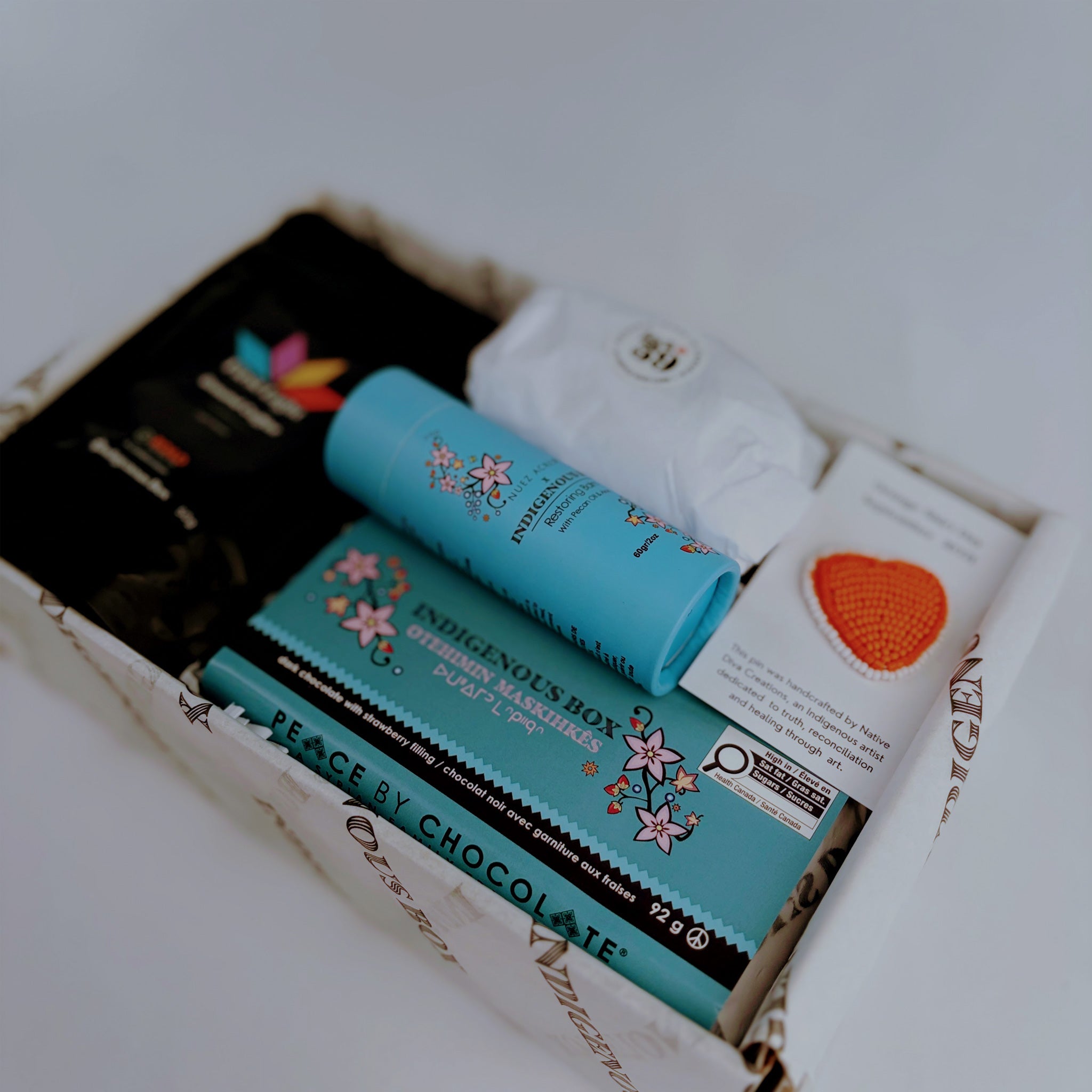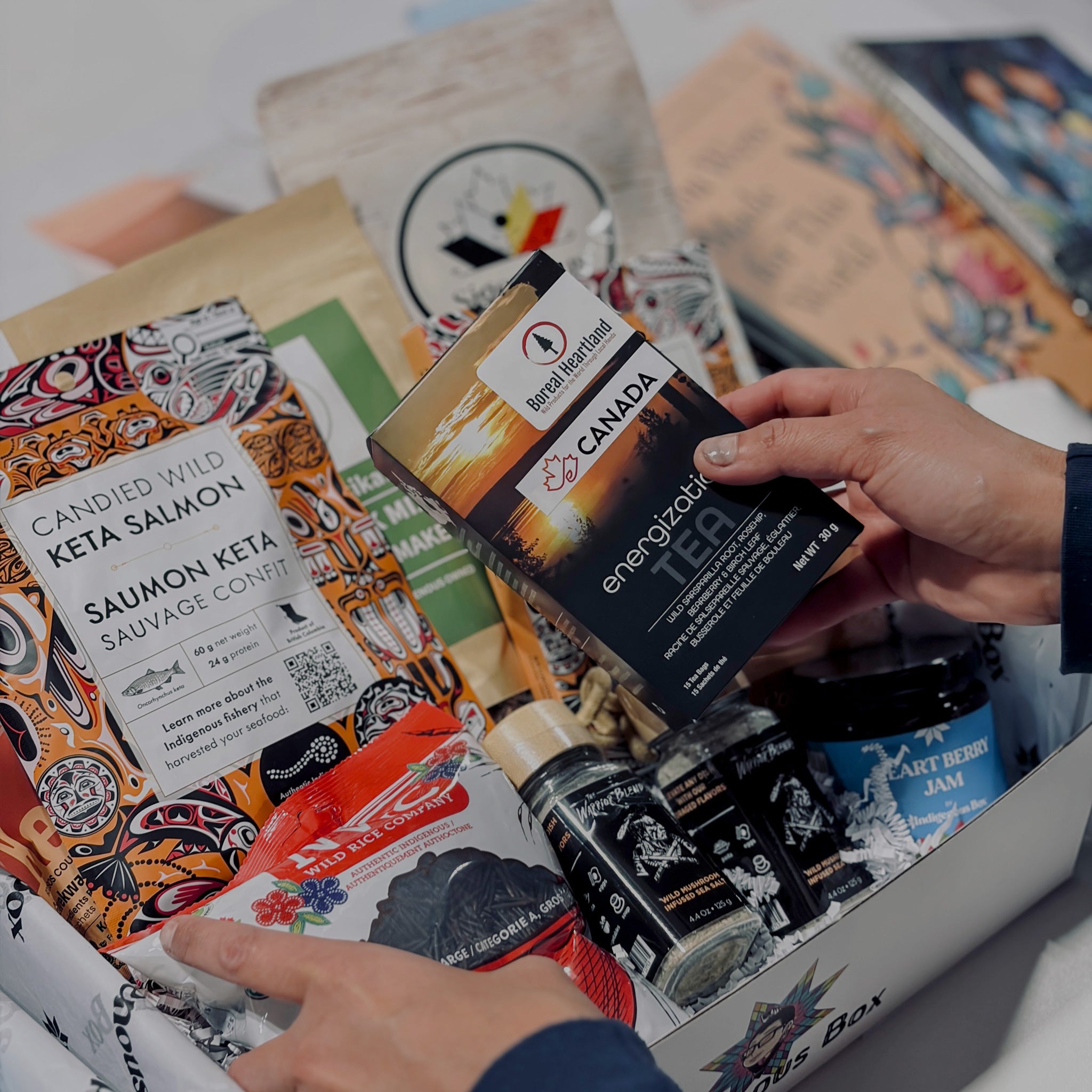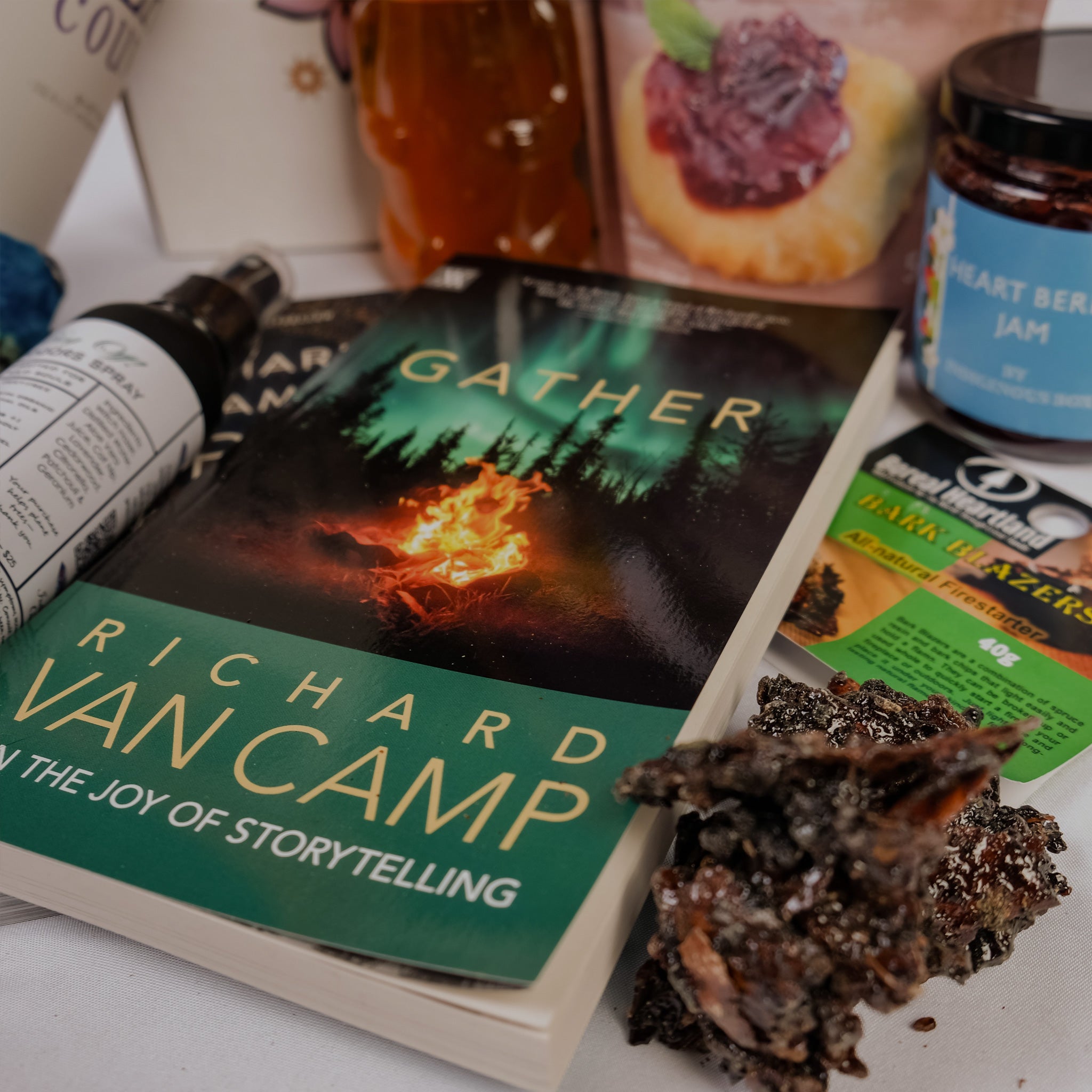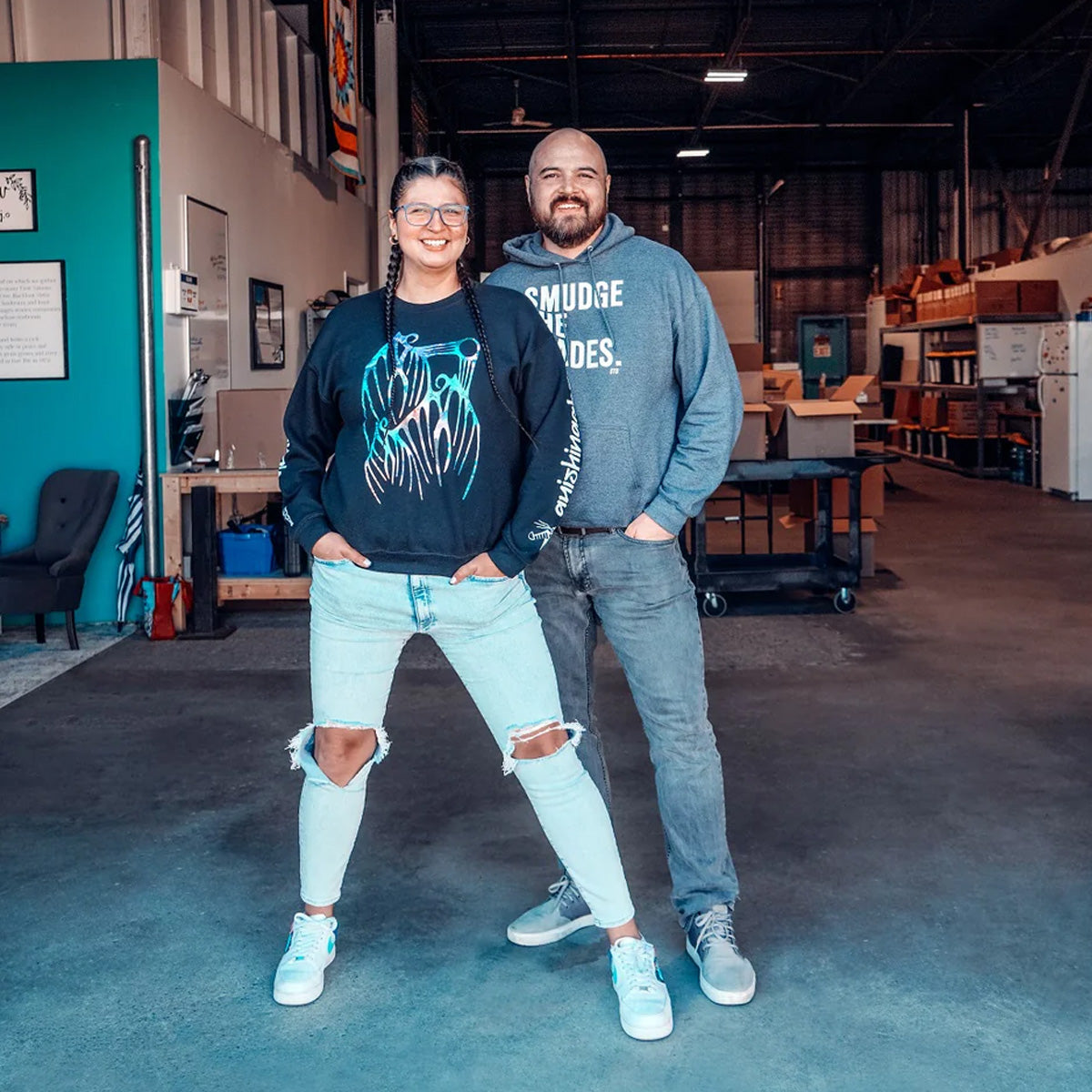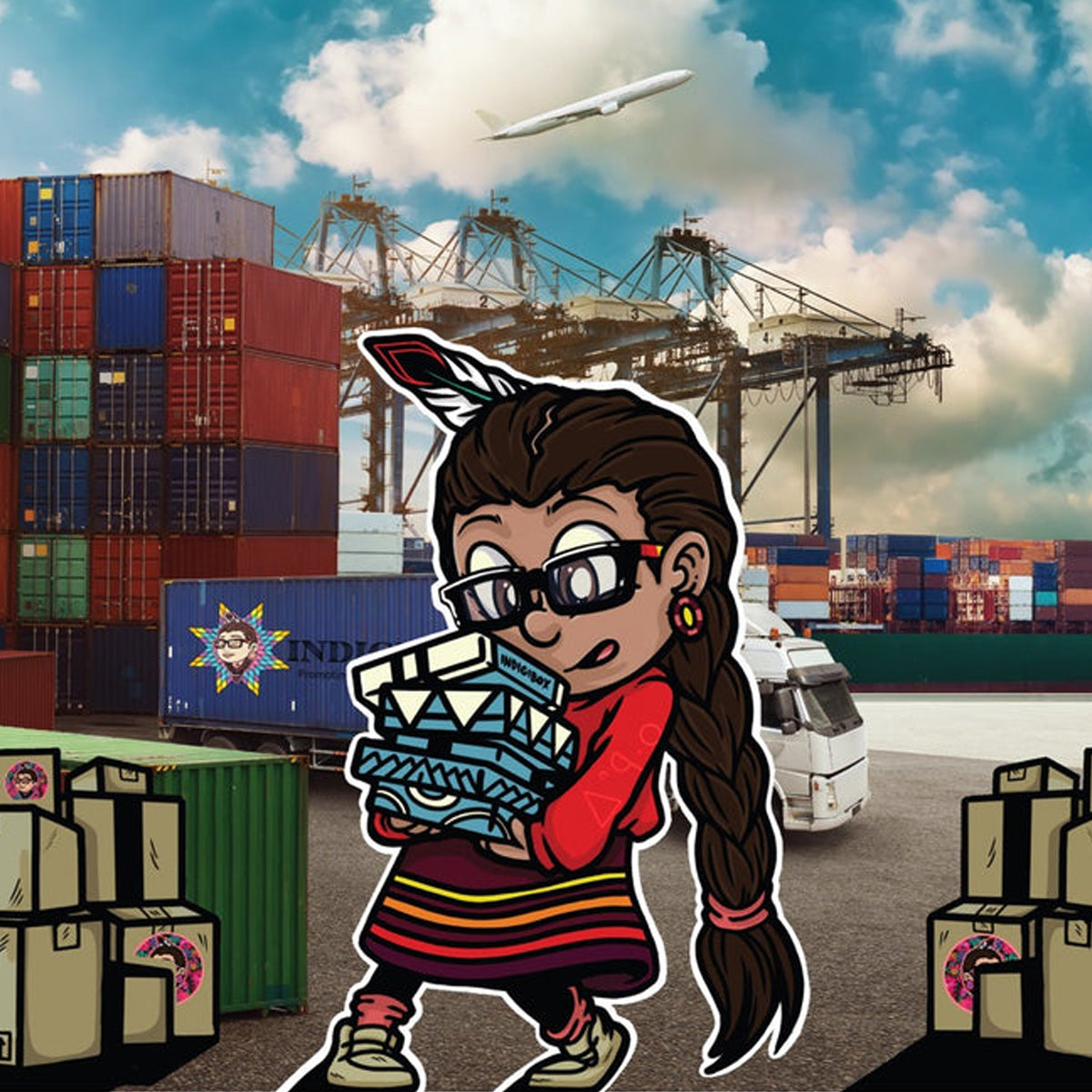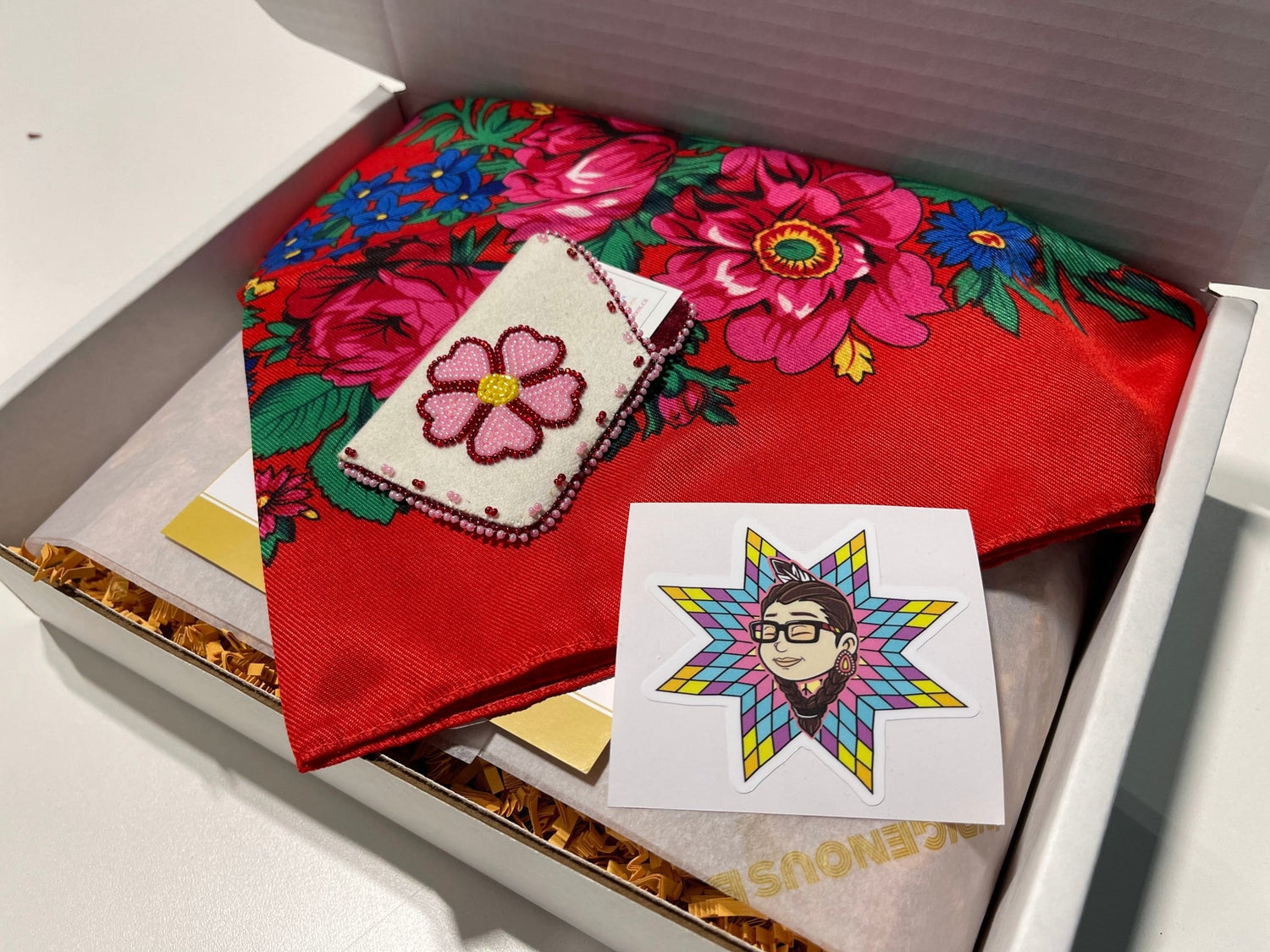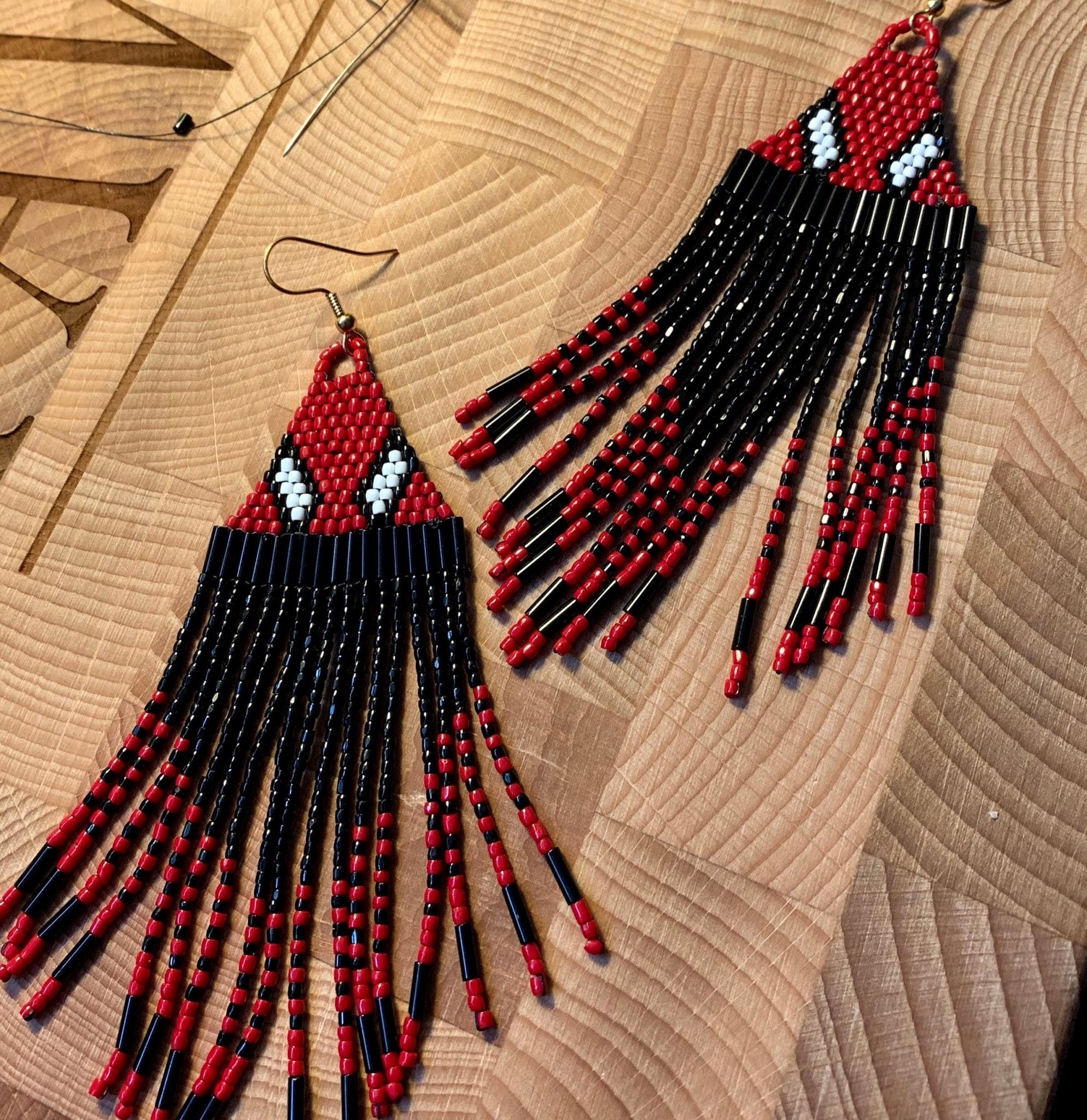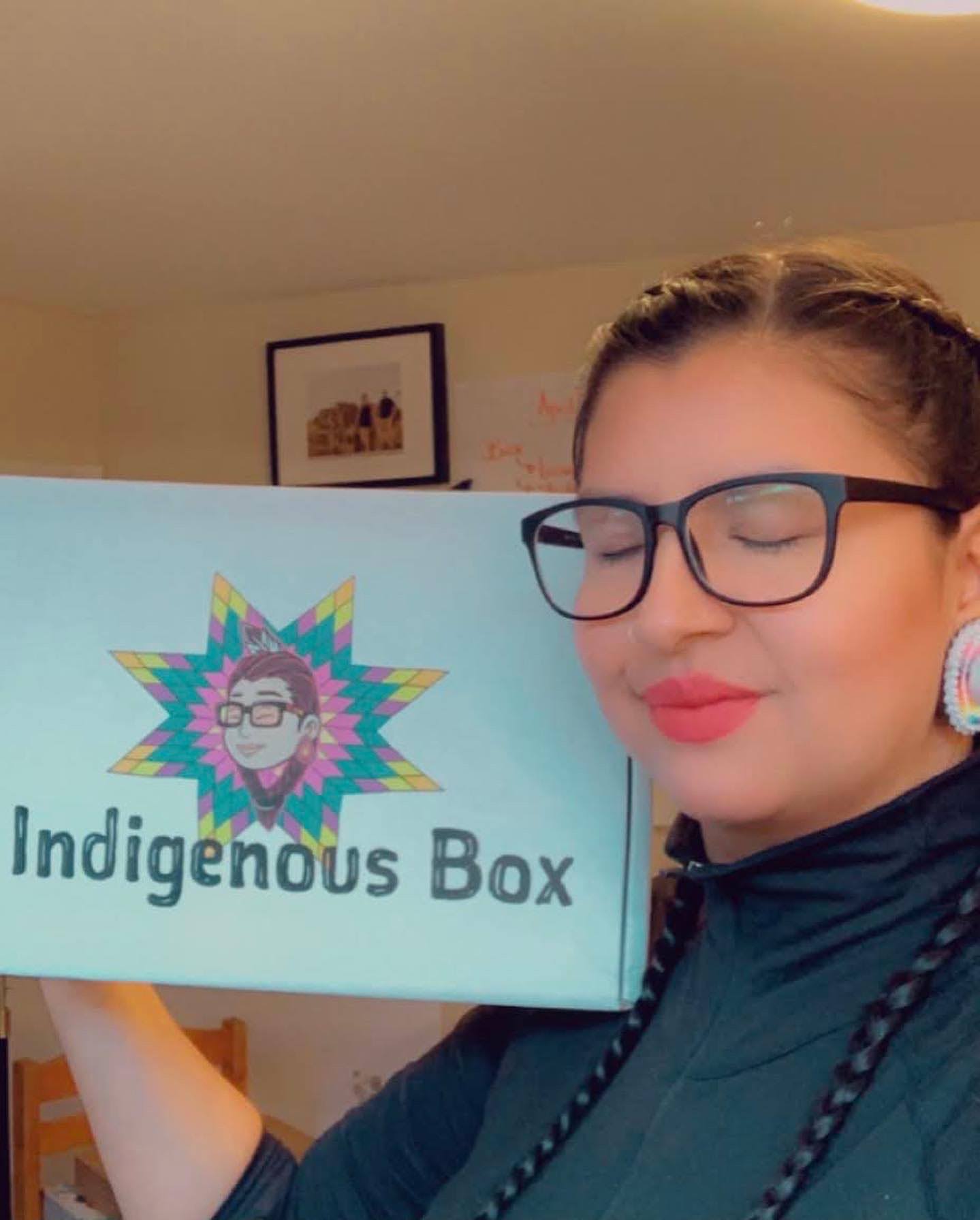A message From our Spring 2021 box
Where I’m from, in Treaty 6 territory, Ukrainian floral scarves have become iconic among many Indigenous Nations. These days, you’ll even see these scarves integrated into pow wow regalia. Us nehiyawak (Cree people) call them “kokum scarves” because kokum means “your grandmother”, a reminder of our grandmothers and a symbol that we carry them with us, when we need them the most.
So, why the floral scarf? On the prairies, there is a vast history of trade and commerce between Indigenous Nations. But what people may not recognize is the history of trade and cooperation between the original peoples and settlers. In fact, the Ukrainian and Cree communities often worked closely together during times of major hardship and famine. Cooperation like this, between Indigenous Nations and newcomers, is a story that is found over and over again across Turtle Island. It was because of this trade, commerce, and cooperation that floral scarves became a symbol of the strength and hard work of our matriarchs.
Long ago, when Ukrainian people arrived in this territory, they brought with them beautiful floral patterned fabrics that were a natural compliment to the floral patterns found in Cree, Dene, and Metis beadwork. Our grandmothers adopted these patterns as they worked closely with their new neighbours to help each other. I guess that also explains why feasts in my community usually feature foods such as pierogies, and cabbage rolls, alongside our traditional foods.
So what does the floral scarf mean to me? When I was growing up, I often watched nohkum (my grandmother) with her hair tied up in a scarf picking berries, preparing meat, cooking for a feast or watching the grandkids. To me, “kokum scarves” are a symbol that embodies the intrepid and entrepreneurial spirit of my grandmothers: women who worked relentlessly to find opportunity, and to build relationships and cooperation among families and nations to ensure our survival. That’s what “kokum scarves” mean to me.
For me, the “kokum scarf” also represents a love for one another.
Until later,
Mallory


